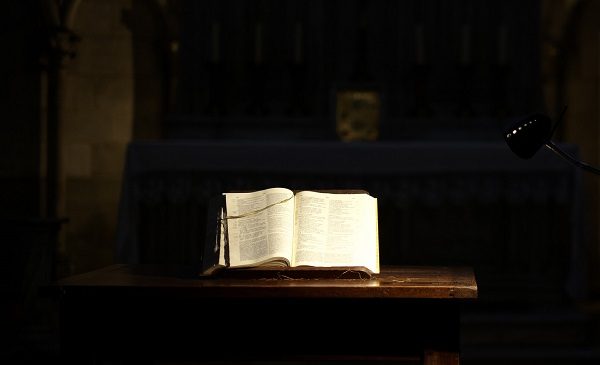
WARNING: the following post has been written for IR religion nerds.
This year will mark the fifteenth anniversary of the al-Qaeda attacks on New York and Washington that occurred on September 11, 2001. Credible studies suggest that in the years following this tragic event the volume of research dedicated to religion in world politics increased sixfold. We might therefore be tempted to mark 2001 as the year when the study of religion in IR began in earnest.
What is the place of ‘religion’ in our field prior to 9/11? I find this to be a pertinent question, especially for young researchers and policy makers entering the discipline, for it influences where we go looking – and indeed what we look for – when trying to define and analyse the place of religion in global affairs. Even a cursory glance at the archives of IR and related disciplines will reveal a body of work interested in religion as a political theme of primary importance. Here are some examples.
Religion as a central problematique: One of the earliest editions of the Journal of the British Institute of International Affairs (1922) published a lecture transcript by L. Curtis titled ‘A Criterion of Values in International Affairs’. Curtis argued that the central problem of world politics was the persistent influence of religion as an impediment to the progress of modern states. At the heart of Curtis’ critique was the view that “religion and politics are but two aspects of life; to ignore one is to miss the meaning of the other.” Here we have religion as a primary subject indispensably linked to the central contests surrounding the formation of a modern global politics.
Religion and the art of differentiation: In the first edition of World Politics (1948) G. Almond’s essay, ‘The Christian Parties of Europe’, explored Christian Democracy as a European ‘third force’ mass movement situated between fascism (eg Spain) and Soviet Communism. The article attempted a precise analysis of Christian Democracy in Austria, Belgium, France, Italy and the Netherlands. Whilst the art of differentiating the effects of religion between contexts and ideologies is often considered to be a ‘next wave’ development of contemporary studies of religion in IR, we have here an example of such an approach in the earliest layers of the discipline.
Religion as an interpretive lens: In an article titled ‘Foreign Policy and Christian Conscience’, published by The Atlantic Monthly in May 1959, senior US diplomat and political scientist George Kennan applies an explicitly religious interpretation of the Cold War conflict, post-colonialism, and the founding of the UN system. Religion research in IR plausibly casts the decades after WWII as a period where secularism dominated the global political landscape and where religion played a minor – even negligible – role in the policy making process. Sources like Kennan complicate this assumption and invite us to consider the theological or cosmological motivations of policy makers more broadly.
Religion and development [not security]: The influential journal Daedalus published a 1973 edition on ‘Post-Traditional Societies’. This volume focused on the importance of ‘tradition’ as a resource in the making of modern postcolonial societies [NB: the opposite to Curtis’ view above]. Numerous articles in the edition take Buddhist and Muslim majority societies in North Africa, South and South-East Asia as a focus, and the consideration of religion as a core component of tradition is significant. In contrast to much of the scholarship written in the years following 9/11, the archives of IR uncover a large body of religion research that is focused on development rather than security.
Religion and the state: In 1986 the Annals of the American Academy of Political and Social Science published a special edition titled ‘Religion and the State: The Struggle for Legitimacy and Power’. The geopolitical sites addressed are varied, as are the religious traditions considered within them: the USA (multiple traditions), Chile (Catholicism), Nicaragua (Catholicism), Nigeria (multiple religions), Libya (‘unorthodox Islam’), Iran (Shia Islam), Israel (‘Jewish fundamentalism’), India (multiple religions), East and West Germany (multiple traditions), Poland (Catholicism), Soviet Union (Russian Orthodoxy), China (multiple religions). Volumes such as this invite us into a richer analysis of religion and the state than discussions of ‘theocracy’ that presently dominate the media space.
There are hundreds of sources across dozens of categories to be discovered from the treasure-trove of the IR archives: articles, reviews, chapters, books, and policy reports that shed further light on the study of religion and global affairs because they were written before the looming shadow of 9/11 could take effect. Even as the discourse on religion and IR has broadened significantly in the past fifteen years, and as we honour the lives lost on a tragic day in 2001 that inaugurated a new era for religion research, the archives of IR will help us gain perspective on the place of religion in global politics beyond the rhetoric of our present moment. The old adage that ‘today’s research stands on the shoulders of that which has gone before it’ still applies.
Further Reading on E-International Relations
- Religion in International Relations and the Russia-Ukraine Conflict
- Opinion – Navigating Epistemic Injustices Between Secularism and Religion
- Secularism: A Religion of the 21st Century
- Probing the Intersection of Religion, Gender, and Political Violence
- United Moderate Religion vs. Secular and Religious Extremes?
- Where is God in the Anthropocene?